This Garlic Parmesan Sauce is lusciously creamy, full of flavor, and thick yet drizzly. It's terrific as a dipping sauce for chicken, snacks, or spreading on pizza, or tossing with pasta. Ready in about 10 minutes!
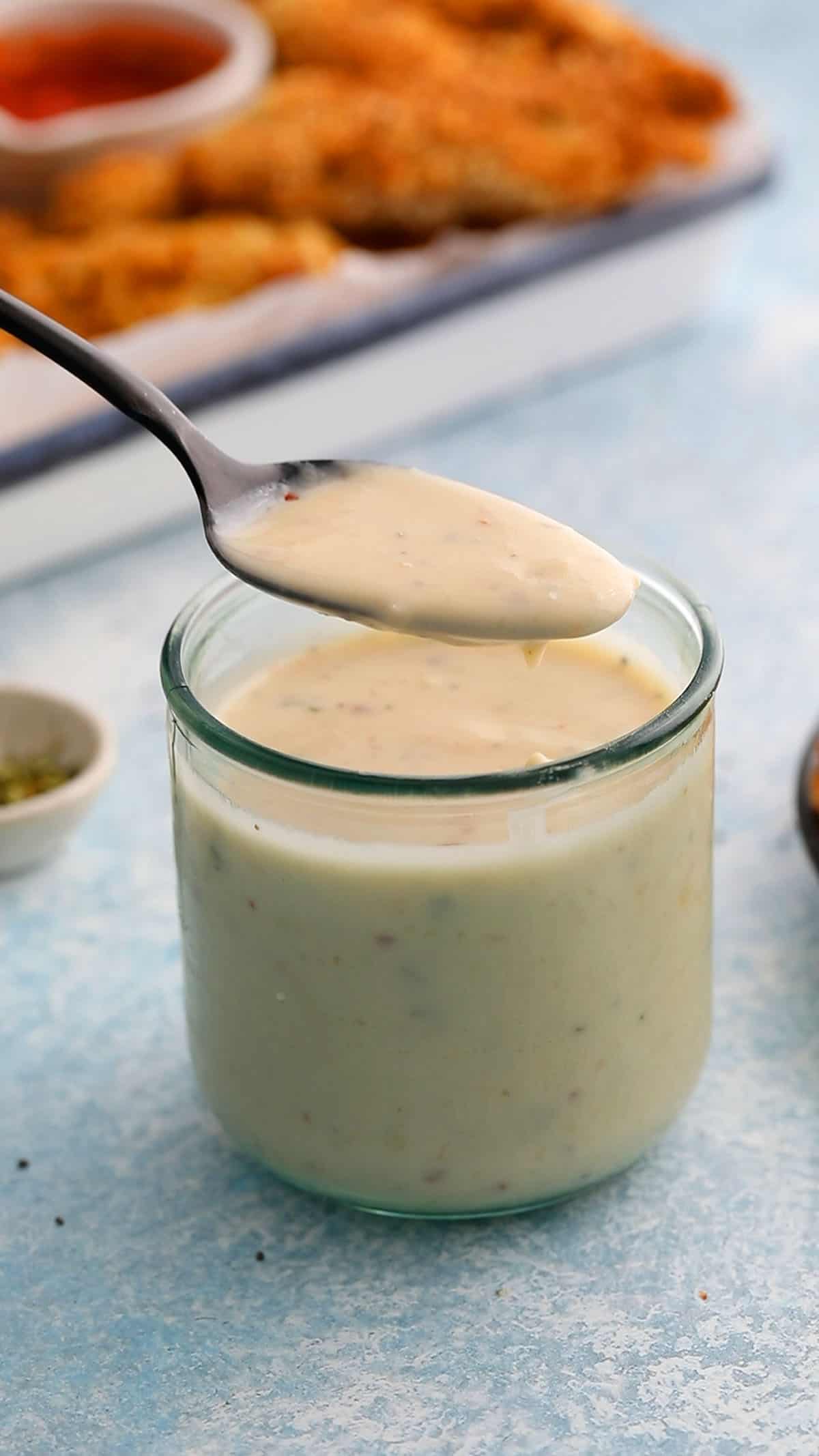
What is garlic parmesan sauce? It is a creamy and flavorful white sauce made primarily with garlic, Parmesan cheese, butter, cream, and seasonings. The white sauce gained popularity from the famous Buffalo Wild Wings restaurant, where it's also known as wing sauce.
This irresistible wing sauce is so flavorful that the restaurant offers it in bottles for customers to enjoy at home. Personally, I prefer making it at home because you get to control the salt and also make it without any additives or preservatives.
Garlic parmesan sauce is commonly used as a dipping sauce for chicken wings, breadsticks or as a drizzle for grilled meats or is also delicious with this air fryer breaded mushrooms. It's also used as a pasta sauce, especially with dishes like fettuccine Alfredo.
When it cools it thickens considerably and can be used as a sandwich and burger spread. The possibilities are endless. This sauce is good on almost everything!
What does garlic Parmesan sauce taste like? It's savory, buttery, and mildly salty with a smooth and lusciously creamy texture. It has a pronounced garlic taste and a hint of tanginess from the Parmesan cheese with a kick of spice, like the air fryer garlic parmesan wings.
Jump to:
Why you'll love it?
- Irresistible garlic parmesan flavors
- Cooks in 10 minutes
- Good on almost everything
- Easy to make and versatile
Ingredients
Scroll down to the recipe card below for full information on ingredients and amounts.
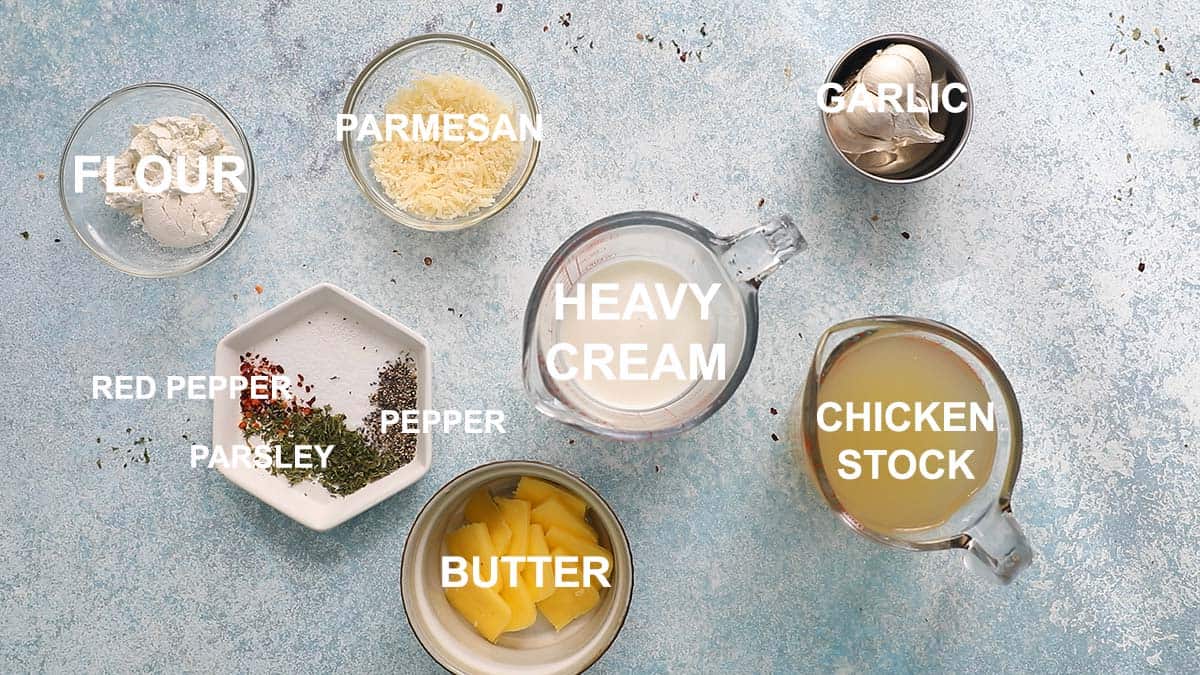
- Butter - It adds a rich buttery flavor to the sauce. Reduce salt if using salted butter. Olive oil is a good substitute for butter but it adds some fruitiness and tends to alter the flavor.
- Garlic - Freshly grated garlic is the star! I use 4 large garlic cloves for pronounced garlic flavor.
- Stock - Chicken broth not only enhances the flavor but also ensures the sauce achieves the ideal dippable consistency. Alternatively, vegetable broth can be substituted to keep the garlic parmesan sauce vegetarian.
- Flour - Like in my one pot mac and cheese recipe, all purpose flour helps to thicken the sauce and give it luscious texture.
- Parmesan - I highly recommend using freshly grated Parmesan cheese, if available. It melts instantly and lends a silky-smooth consistency, unlike pre-shredded cheese. However, use whatever you have around!
- Heavy cream - Heavy cream creates a luxuriously creamy texture in this garlic Parmesan sauce. Substitute half and half or whole milk if needed, but expect a slightly thinner consistency and compromise in flavor.
- Seasonings - I use a mix of dried parsley, red pepper flakes, salt and black pepper to ensure this sauce is packed with flavor.
How to make?
You can find full printable recipe below, but here is a quick overview of the procedure along with step-by-step photos.
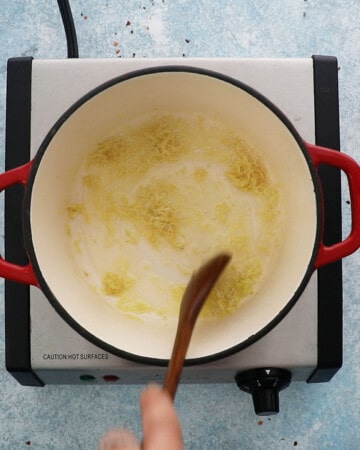
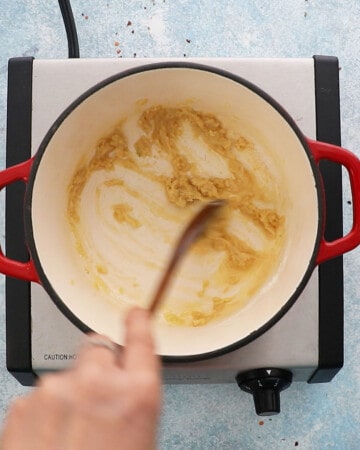
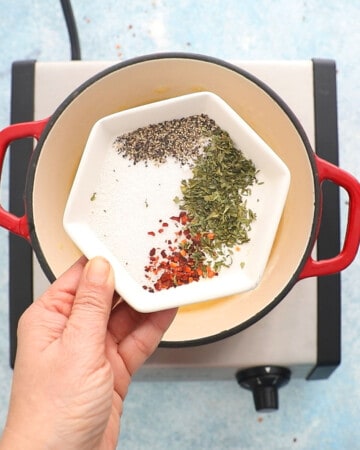
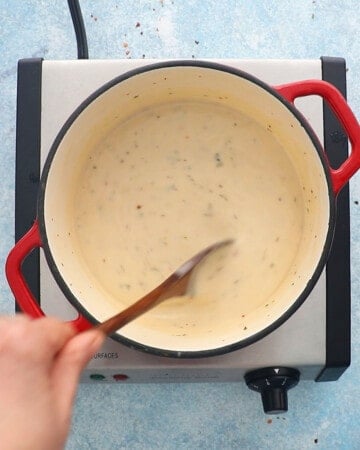
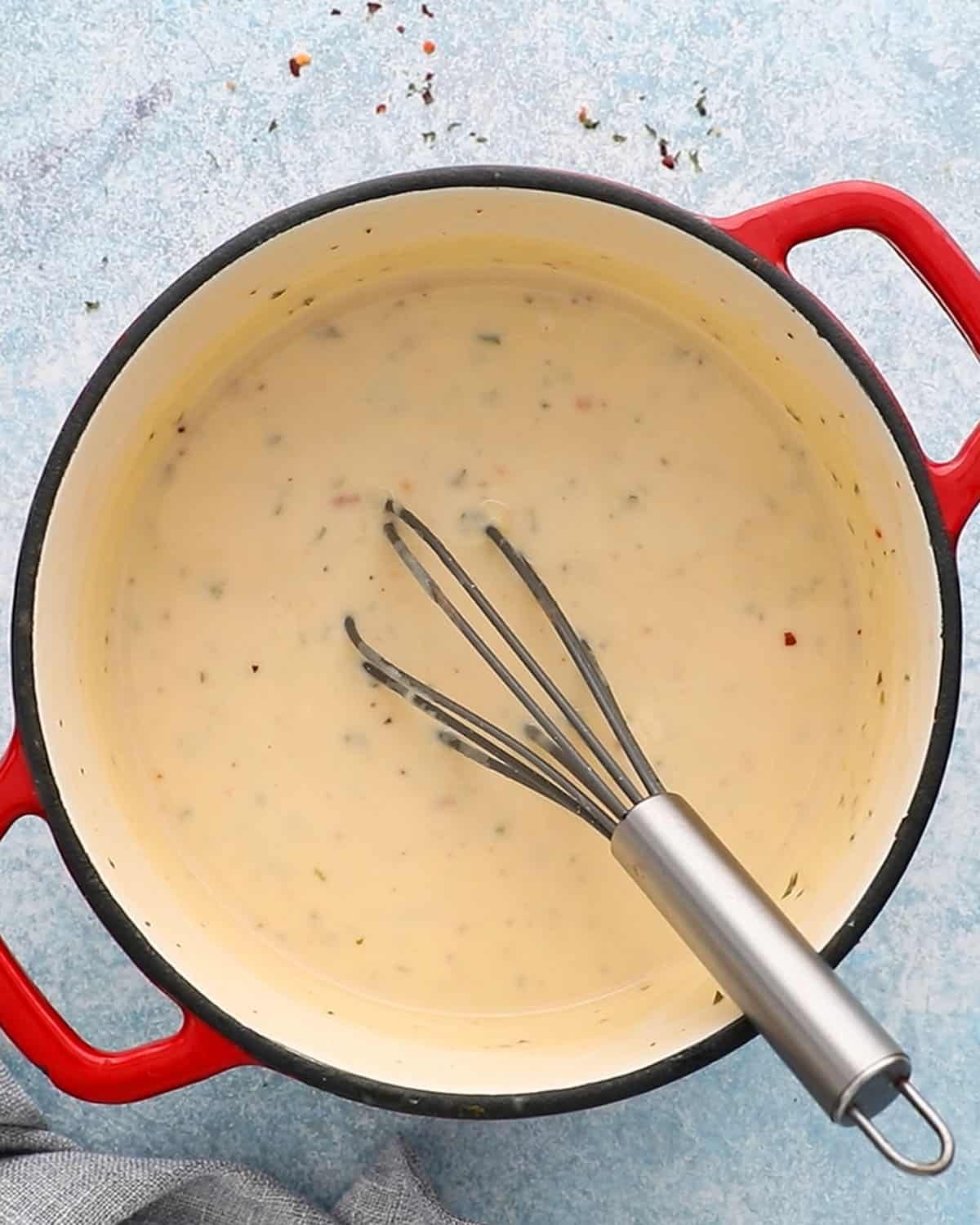
Troubleshooting
- To make the sauce thicker, simmer it for a few more minutes or add a mixture of flour or cornstarch mixed with water as a thickening agent and let it cook for a few minutes to remove any raw flavor.
- To make the sauce thinner, you can add more liquid ingredients such as broth or cream. Adjust the consistency gradually until you reach your desired thickness.
How to use
Although initially served as a wing sauce by Buffalo Wild Wings restaurant, this creamy garlic parmesan sauce is versatile and pairs deliciously with more than just chicken wings.
- Chicken: Whether it's grilled, fried, or roasted chicken, and of course, classic chicken wings, this sauce complements them all perfectly. If tossing cooked chicken wings in the white sauce then I recommend tossing 1 pound of wings with ¼ cup of sauce.
- Pasta: This garlic parmesan sauce makes the best pasta sauce! Toss it with your favorite pasta shape or cooked ravioli. It is delicious served with toasted tortellini.
- Pizza: It's an ideal substitute for traditional red pizza sauce, allowing you to make white pizzas. Try it on air fryer naan pizza for a 10-minute dinner or use the sauce to leftover pasta pizza.
- Bread: I also serve it as a dipping sauce with my homemade garlic knots or parmesan bread bites.
- Dipping sauce: Dip roasted or grilled veggies, air fryer chicken tenders or roasted mushrooms or air fryer broccoli.
- Spread it on burger: Refrigerate the cooled parmesan cheese sauce to thicken and then spread on your favorite burger or sandwich.
- Toss it with cooked pasta: Use about 1 cup of sauce for a pound of cooked pasta. Use a splash of pasta water to adjust the thickness if needed.
Storage and Re heating
You can make this garlic parmesan sauce up to a week in advance! I often make a batch and store it in the fridge for those busy nights.
- In the Refrigerator: Store any leftovers in an airtight container in the fridge for up to 5 days. Remember, the ingredients may separate over time, so a quick stir before use is recommended.
- To Reheat: It is best not to microwave this sauce. Reheat it in a small saucepan over medium-low heat. Be sure to add a splash of stock or some milk to loosen it up. Cook, stirring frequently until it's warmed through. Season to taste!
- Freezing: I do not recommend freezing garlic parmesan sauce, because it can sometimes alter the texture.
Helpful tips
- Use fresh grated parmesan cheese for the smoothest sauce. While pre-grated cheese will work, freshly grated parmesan melts instantly without leaving any grittiness.
- Adjust salt. The amount of salt will depend on the type of stock used and your taste.
- The sauce will thicken as soon as it cools. Keep in mind while letting the sauce simmer that it will thicken as it cools.
- If the sauce appears too thick, simply add a splash of broth or a little more cream to adjust the consistency. When serving with pasta, add a splash of pasta water while tossing it with the cooked pasta.
- The sauce thickens up considerably when refrigerated. Allow it to sit on the counter for 10-15 minutes to loosen up and reach room temperature, resulting in a less thick consistency.
Recipe FAQs
While both are creamy sauces with some overlap in ingredients, especially the use of Parmesan cheese, they are not exactly the same.
Alfredo sauce is typically made with butter, heavy cream, and Parmesan cheese, resulting in a rich and smooth sauce. On the other hand, garlic parmesan sauce is a type of bechamel sauce which includes additional ingredients such as garlic, herbs, and broth, giving it a more savory flavor compared to traditional Alfredo sauce.
Yes, powdered garlic can be substituted for fresh garlic. However, it's important to note that while fresh garlic offers a more pungent and distinct flavor, powdered garlic may be milder and less pronounced.
If your sauce is too salty, there are a few ways you can try to remedy the situation:
1. Dilute the sauce by adding a bit more of the non-salty ingredients such as cream, milk or water to dilute the saltiness. Be sure to adjust the consistency accordingly.
2. Adding a pinch of sugar or a drizzle of honey, can help balance out the saltiness.
3. Mixing in acidic ingredeints like a splash of lemon juice or vinegar can help neutralize the saltiness and brighten the flavors.
4. If diluting the sauce isn't feasible, consider serving it with unsalted accompaniments like plain pasta or steamed vegetables to help balance the overall saltiness.
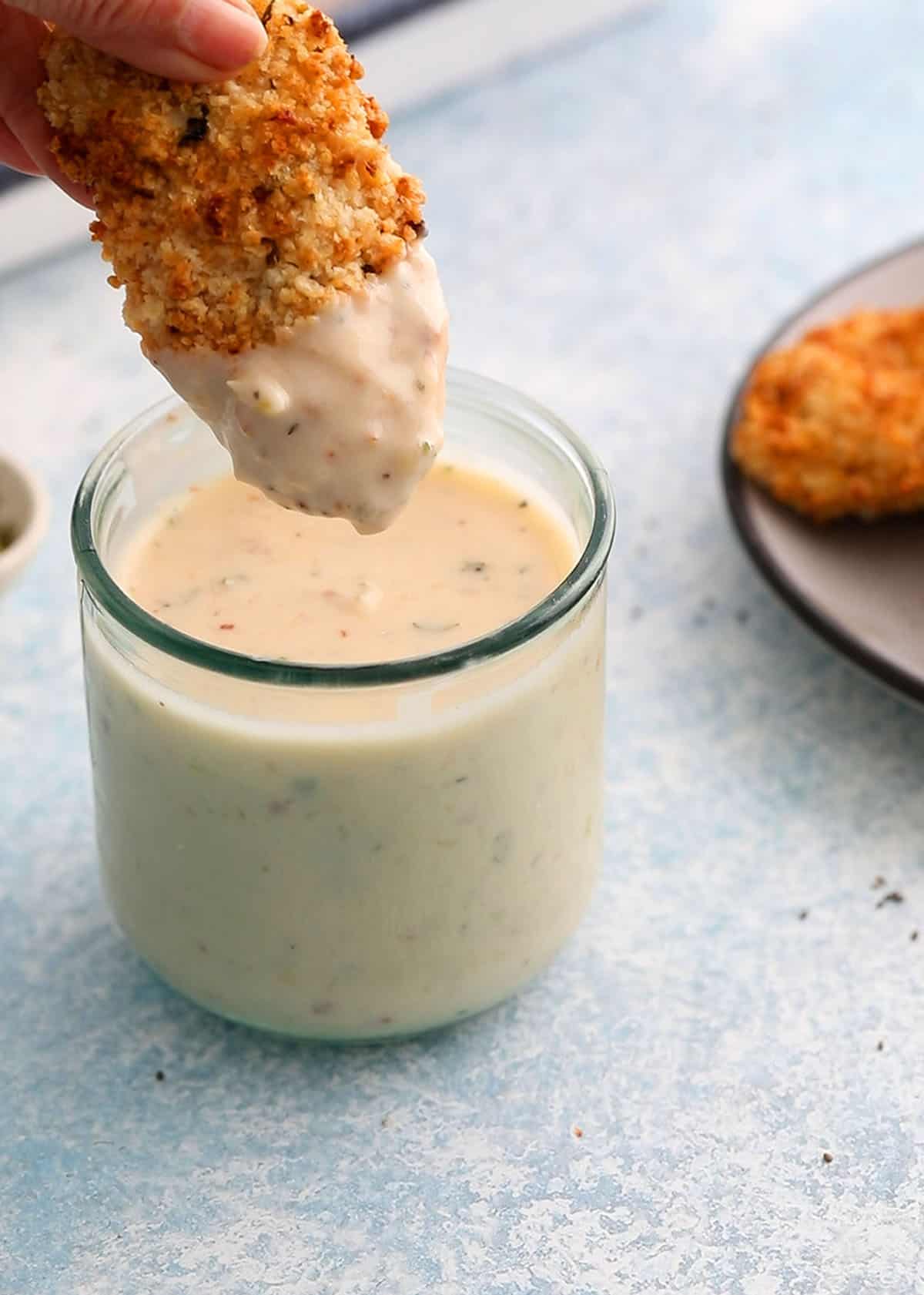
More sauce recipes
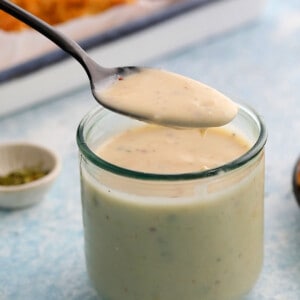
Garlic Parmesan Sauce
Ingredients
- 4 tablespoons unsalted butter
- 4 garlic cloves, large grated
- ¼ cup all purpose flour
- 2 cups chicken stock I used 33% reduced sodium
- 2 teaspoons dried parsley
- ½ to 1 teaspoon salt use according to taste
- ¼ teaspoon ground black pepper
- ¾ cup heavy cream
- 1 cup parmesan cheese
Instructions
- Melt the butter in a medium saucepan. Add the garlic and cook in low heat, until fragrant for 1 to 2 minutes.
- Whisk in the flour to form a paste and cook for about 30 seconds.
- Pour in the chicken stock, parsley, salt and pepper.
- Cook, whisking constantly over medium heat, for 2 to 4 minutes or until it thickens.
- Add the heavy cream and grated Parmesan cheese. Whisk and heat until the cheese melts and the sauce is smooth and creamy.
- Taste and adjust with salt and pepper to your liking. Enjoy as a dipping sauce or with pasta or pizza.
Notes
Nutrition
Nutritional information, based on third-party calculations, should be seen as estimates, not guarantees, as various factors like product types, brands, processing methods, and more can alter the nutritional content in recipes.


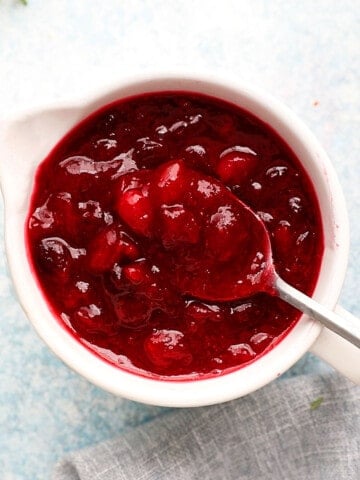
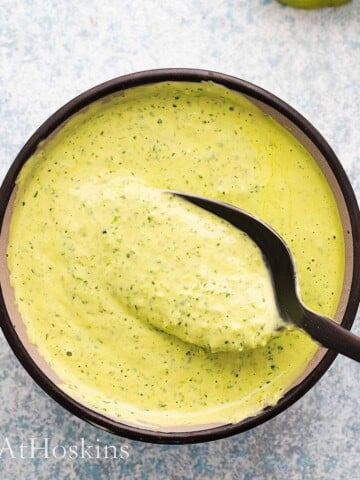
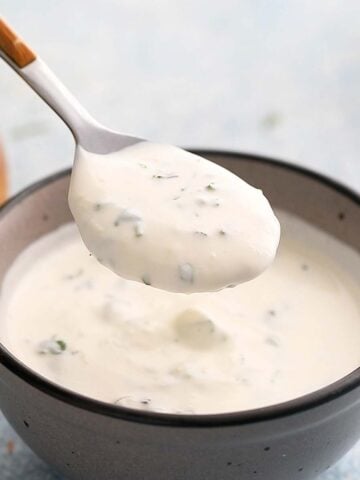
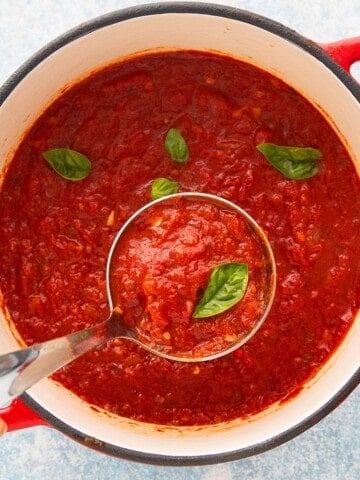
Leave a Reply